Forest soils, carbon deposits
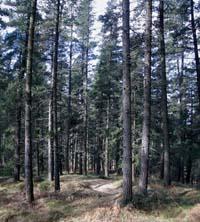
The Kyoto protocol, signed by most countries in the world, requires Europe to reduce its CO 2 production by 8% in 1990 between 2007 and 2012. Europe produces 16% of CO 2 issued worldwide and only represents 6% of the world's population. For this reason, the governments of different countries have sought solutions to solve a society with an enormous need for resources.
This effort is also being made in the Autonomous Community of the Basque Country. The Basque Government has created the Basque Climate Change Office. It has two main objectives: reduce emissions and encourage deposits. One way to reduce emissions is to increase energy efficiency and increase the use of renewable energy and natural gas. However, CO 2 production is on the rise, moving further and further away from the Kyoto barrier. Therefore, the key to the problem may be in the second objective, that is, in promoting carbon deposits.
To talk about land deposits is to talk about forests. But not only the trees, but the trees -- and the vegetation -- are large deposits of carbon, but not the only ones. The soil also participates in the carbon fixing process, which is almost triple carbon than in the aerial part. Therefore, in order for the deposit to be effective, in addition to managing the trees themselves, it is necessary to manage the soil well. And to manage it well, you have to understand how the soil is created and grown, that is, how it becomes a carbon tank.
Carbon cycle
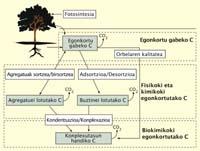
Trees use light as a source of energy and, through the metabolic process called photosynthesis, absorb CO 2 from the atmosphere and produce carbon polymers carbohydrates. These simple organic compounds are organized into more complex structures for the formation of trunks, roots and leaves, storing this carbon in various forms and places.
This biomass, year after year, transmits organic matter to the soil in the form of orbel, when the decomposing community begins the rot process. This process involves invertebrates, fungi and bacteria. These living beings use the organic matter of the soil as a source of food and of its vital activity nutrients are released for the plants on the one hand to the soil and, on the other, they release carbon to the atmosphere as CO 2, that is, the mineralization of the organic matter is carried out.
It is true that carbon is fixed in biomass, but how many years is it fixed? Once the forest is cut, the fate of biomass carbon is to return it to the atmosphere before (paper) or after (furniture). Soils are deposits that for hundreds or thousands of years can store carbon in various ways.
Soil organic matter
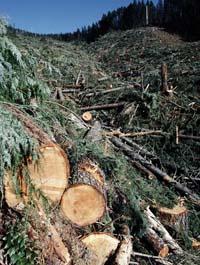
Soil, in addition to the climatic conditions of a certain place, arises from the interaction between mineral and organic components. The mineral components will be sands, mud and clays from the mother rock, whose proportion will be determined by the rock itself: sandstones rich in sands and lutitas richer in clays. The organic component of the soil is the remains of plants, animals or microorganisms at different levels of rot.
In order to maintain the organic matter introduced into the soil and stabilized in the long term, carbon must be avoided in the food chain of microorganisms. There are three processes. On the one hand, chemical interactions stabilize carbon. Both clays and organic matter have a negative charge. Therefore, they would tend to distance themselves. But when positive charge cations such as calcium, magnesium, potassium or the same are interspersed, carbon and clay are chemically joined forming organomineral complexes.
On the other hand, a physical stabilization must occur. As mineral particles and organic matter are chemically associated, microarids form (less than 250 m). And these microaggregates are joined thanks to a series of adhesive compounds that free the roots of plants and fungi hifes to the area, resulting in stable macroaggregates (over 250 m).
Micro-aggregates and macro-aggregates are soil specific microhabitats. Because within the arid the diffusion of oxygen and the food source is less, most of the mycoorganisms are found outside the arids, physically stabilizing the carbon contained therein.
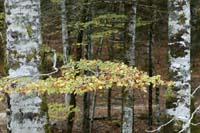
Finally, biochemical stabilization of organic matter is also essential. This stabilization depends on the complexity of the chemical structure of matter. The classification of tree species is carried out according to the quantity and quality of the organic matter they produce. Leafy species renew their leaves once a year and create a nutrient-rich mulch (calcium, magnesium or potassium). Conifers, on the other hand, always remain green, and their orbela is rich in lignins. Compounds like lignin have a great chemical complexity, and due to the difficulties of microorganisms to break down this type of compounds, carbon is fixed in the soil. In addition, the transformation of organic compounds generated in the rotting process also allows the fixation of carbon into compounds that cannot be used by microorganisms such as forbico acid, humic acid and huminas.
Managing the soil
The natural process could fix large amounts of carbon in the Autonomous Community of the Basque Country if stabilization processes are not interrupted. Forest soils account for 54% of the area of the Community. 53% of this area is covered by fast-growing conifers, mainly radiata pine, and leafy, the remaining 47%. But the landscape of the Atlantic side and the Mediterranean are completely different. On the Atlantic side, fast-growing plantations cover 70% of the forest area, while oak and beech trees reach only 10%.
Until the 1940s, most oak and beech trees were read for hardware, naval industries or charcoal, but have not since been exploited.

The forestry activity of radiata pine, for its part, has a clear cultural and social impact, not only from an ecological or economic point of view. Pine plantations are cut in fact at 35-40 years of age, leaving large surfaces without any protection from erosion. In addition, since the 1980s, the degree of machining has increased considerably in this management system, and currently, especially in Bizkaia and Gipuzkoa, the use of bulldozer is widespread to prepare soils for a new plantation. So how can this forest management affect the largest carbon deposit in the Basque Country?
When a bulldozer prepares the soil for a new planting, it affects in two ways. With the front shovel of the machine, remove the plants that can compete with the new plantation, and with subsequent subsoler, performs a deep plow of up to 50 centimeters to easily develop the roots of the pine plantules.
The natural vegetation disperses through the front shovel of the machine (for example, the scrub) accumulates on the slope slope. This vegetation, on the one hand, fixed the carbon while living in its biomass and, on the other, added organic matter to the soil. The extraction of this organic matter from the soil reduces the fertility of the next pine plantation. Also, lower tree growth will reduce carbon accumulation in second-generation biomass.
But not only that, if the soil is clear and the direct irradiation of the Sun increases the temperature of the soil, it will also increase the activity of mycoorganisms. This will increase the release of CO 2 into the atmosphere. In addition, when the subsoler breaks the soil macroaggregates, physically protected carbon is also available to microorganisms, increasing the respiration of CO 2.
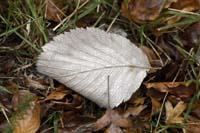
Therefore, if you want to use the soil as an effective carbon tank, it is necessary not to break the natural structure of the soil. And to do this, the current way of managing forest land should be changed.
Perhaps this is the only way to make the most of the forest. In the Autonomous Community of the Basque Country there are already many forests and it is very difficult to expand the space covered by the forest. Therefore, if you want to increase the amount of carbon that marks nature in the three provinces, you must ensure forest land management.

Buletina
Bidali zure helbide elektronikoa eta jaso asteroko buletina zure sarrera-ontzian











